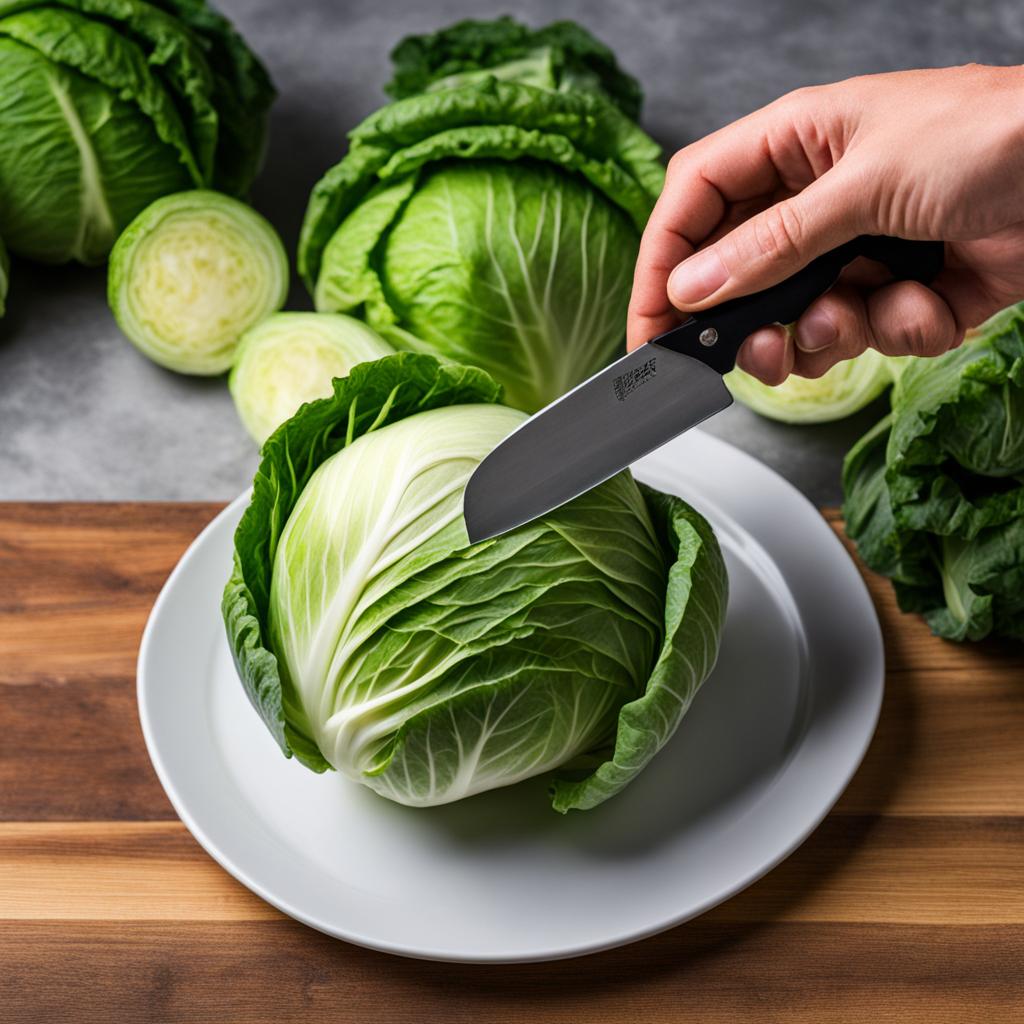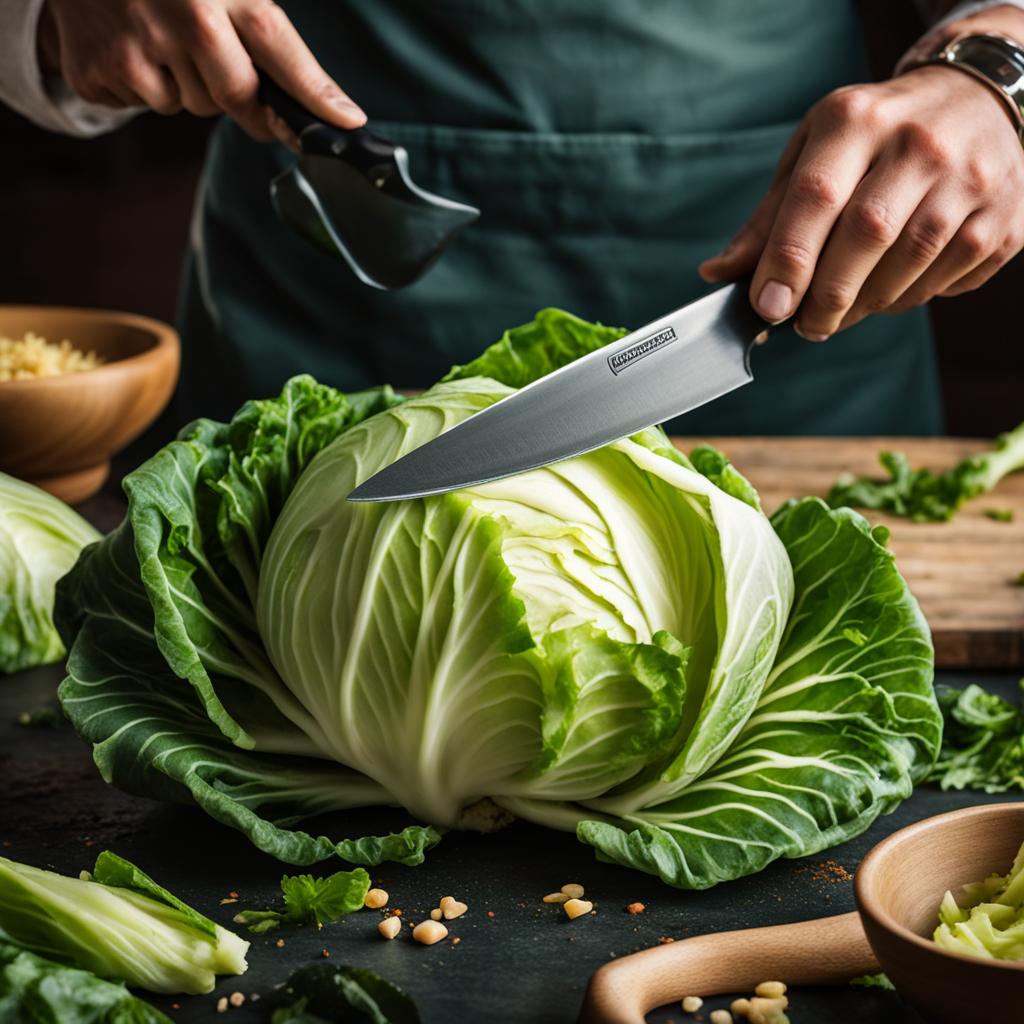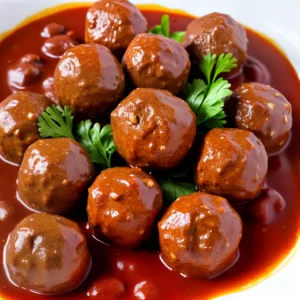Cutting cabbage properly is essential for various recipes. Whether you’re making slaws, stir-fries, soups, or other dishes, learning the right cutting techniques will ensure even and consistent results. In this article, I will guide you through step-by-step instructions on how to cut cabbage for different recipes.
Types of Cabbage
Before diving into cutting techniques, it’s important to familiarize yourself with the different types of cabbage. The most common varieties include green cabbage, red cabbage, Napa cabbage, and Savoy cabbage. Each type has its own unique characteristics and can be used in various recipes. Knowing the differences will help you choose the right cabbage for your dish.
How to Cut Cabbage into Wedges
Cutting cabbage into wedges is a versatile technique that can be used as an end goal or as a step towards cutting it into other shapes. To cut cabbage into wedges, start by removing any outer leaves that are tough or wilted. Then, use a sharp chef’s knife to halve the cabbage through the core. Continue cutting the halves into quarters until you have the desired number of wedges. Adjust the thickness of the wedges according to your preference.
How to Cut Shredded Cabbage
Shredded cabbage is commonly used in slaws and salads. To cut cabbage into thin slices for shredding, follow the same initial steps as cutting wedges. Once you have the wedges, place one wedge cut-side down and remove the core. Then, thinly slice the cabbage wedge crosswise, starting from the tip down to where you removed the core. Repeat with the remaining wedges to get shredded cabbage. Variations for longer shreds or finely shredded cabbage are also possible.
How to Cut Cabbage for Stir-Fries and Soups
For stir-fries and soups, it’s best to cut cabbage into smaller pieces. To achieve this, cut each wedge lengthwise into uniform slices. Then, cut the slices crosswise to form a grid, resulting in chopped cabbage. The leaves will separate into squares, making it easier to incorporate into your stir-fries or soups.
How to Cut Cabbage for Slaw
Cutting cabbage for slaw requires thin and even slices. Follow the same initial steps as cutting wedges. Once you have the wedges, slice them into thin strips, either lengthwise or crosswise. This will give you the perfect texture for your slaw. Shredding cabbage with a mandoline or food processor can also achieve finer, stringier pieces for slaw.
How to Cut Cabbage for Roasting
Roasted cabbage makes a delicious side dish or main course. To cut cabbage for roasting, start by removing the core from the bottom. Then, lay the cabbage on its side and slice it crosswise into 1/2-inch rounds. These rounds resemble “steaks” and can be seasoned and roasted to perfection.
Additional Cutting Techniques for Cabbage
In addition to the basic cutting techniques mentioned above, there are other ways to cut cabbage for specific recipes. For example, cutting cabbage into circles is ideal for certain dishes like roasted cabbage steaks. Dicing cabbage into squares is great for stir-fries and other fried cabbage dishes. Explore these additional techniques to expand your culinary repertoire with cabbage.
Tips for Cutting Cabbage
To ensure a successful cabbage cutting experience, follow these tips:
- Use a sharp chef’s knife for clean cuts.
- Remove any tough or wilted outer leaves before cutting.
- Adjust the thickness of the cabbage cuts according to your recipe.
- Keep your fingers away from the blade and use a cutting board with a non-slip surface.
- Practice proper knife grip and cutting techniques for safety.
Favorite Cabbage Recipes
Now that you know how to cut cabbage, it’s time to put your skills to use in delicious recipes. Here are some of my favorite cabbage recipes, including cabbage soup, coleslaw, cabbage tacos, and more. Explore the versatility of cabbage in a variety of appetizers, main dishes, and sides.
Storing and Freezing Cabbage
If you have leftover cabbage or want to store it for later use, proper storage is key. Wrap the remaining cabbage tightly with plastic wrap or beeswax and store it in the crisper drawer of your refrigerator. It should stay fresh for up to two weeks. If you have too much cabbage to use within that timeframe, you can also freeze it. Follow the steps outlined in my post on How to Freeze Cabbage to preserve its quality.
Types of Cabbage
Before diving into cutting techniques, it’s important to familiarize yourself with the different types of cabbage. The most common varieties include green cabbage, red cabbage, Napa cabbage, and Savoy cabbage. Each type has its own unique characteristics and can be used in various recipes. Knowing the differences will help you choose the right cabbage for your dish.
Green Cabbage:
- Vibrant green color
- Crunchy texture
- Mild and slightly peppery flavor
- Most versatile type, suitable for various cooking methods
Red Cabbage:
- Deep purple color
- Firm and dense texture
- Earthy and slightly sweet flavor
- Retains color when cooked, great for adding visual appeal to dishes
Napa Cabbage:
- Pale green color with elongated leaves
- Tender and crisp texture
- Mild and slightly sweet flavor
- Commonly used in Asian cuisine, particularly in stir-fries and salads
Savoy Cabbage:
- Curly, crinkled leaves with a bright green color
- Tender and delicate texture
- Mild and nutty flavor
- Often used in European dishes, such as cabbage rolls or soups
Each type of cabbage brings its own unique qualities to the table, so don’t be afraid to experiment and try different varieties in your recipes. Now that you’re familiar with the types of cabbage, let’s move on to the various cutting techniques to enhance your culinary skills.
How to Cut Cabbage into Wedges
Cutting cabbage into wedges is a versatile technique that can be used as an end goal or as a step towards cutting it into other shapes. To cut cabbage into wedges, follow these step-by-step instructions:
- Start by removing any outer leaves that are tough or wilted.
- Use a sharp chef’s knife to halve the cabbage through the core.
- Continue cutting the halves into quarters until you have the desired number of wedges.
- Adjust the thickness of the wedges according to your preference.
By following these simple steps, you can easily create cabbage wedges for various recipes.
Why Cut Cabbage into Wedges?
Cutting cabbage into wedges is a great way to showcase its natural shape and texture. It’s also a convenient method when you want to separate the cabbage into individual servings, such as when grilling or roasting cabbage wedges. Additionally, cabbage wedges can be used as the base for other cutting techniques, such as shredding or chopping, depending on the recipe.
Whether you’re preparing cabbage for a side dish, a salad, or a main course, cutting it into wedges is a simple and effective method that adds visual appeal and versatility to your dishes.
How to Cut Shredded Cabbage
When it comes to making cabbage slaw or adding a crunchy element to your dishes, cutting cabbage into thin, shredded pieces is the way to go. Follow these steps to achieve perfectly shredded cabbage:
- Begin by removing any tough or wilted outer leaves from the cabbage.
- Next, cut the cabbage in half through the core using a sharp chef’s knife.
- Place one cabbage half cut-side down and remove the core by making diagonal cuts.
- Thinly slice the cabbage crosswise, starting from the tip and working your way down to where the core was removed.
- Repeat the slicing process with the remaining cabbage halves until you have the desired amount of shredded cabbage.
Variations for longer shreds or finely shredded cabbage are also possible by adjusting the thickness of your slices. Shredded cabbage adds texture and freshness to slaws, salads, and other dishes, making it a versatile addition to your culinary repertoire.
Benefits of Shredded Cabbage
Shredded cabbage provides a great base for slaws and salads, adding a satisfying crunch and freshness to your dishes. It’s also a fantastic source of vitamins, minerals, and fiber, making it a healthy addition to your meals.
Now that you know how to cut shredded cabbage, you can elevate your recipes with its vibrant and delicious presence. Whether you’re creating a flavorful slaw or adding a crisp element to your favorite dishes, shredded cabbage is a versatile ingredient that will bring a burst of texture and flavor to your culinary creations.
How to Cut Cabbage for Stir-Fries and Soups
If you’re looking to add cabbage to your stir-fries or soups, it’s important to know how to cut it properly. Chopped cabbage is the perfect addition to these dishes, providing a delicious crunch and flavor. Follow these step-by-step instructions to cut cabbage for stir-fries and soups:
- Start by removing any tough or wilted outer leaves from the cabbage.
- Take a sharp chef’s knife and cut the cabbage into halves through the core.
- For stir-fries, cut each cabbage half lengthwise into uniform slices.
- Then, cut the slices crosswise to form a grid, resulting in chopped cabbage.
- For soups, follow the same steps to cut the cabbage into uniform slices.
- However, instead of chopping it into a grid, you can leave it in longer slices or cut it into smaller pieces, depending on your preference.
Chopped cabbage is versatile and can be easily incorporated into your favorite stir-fry or soup recipes. Its mild flavor pairs well with a variety of ingredients, making it a great addition to any meal.
Whether you’re aiming for a quick stir-fry or a comforting soup, learning how to cut cabbage properly will enhance your culinary creations. The chopped cabbage will cook evenly and blend seamlessly with other ingredients, resulting in a delicious and satisfying dish.
Now that you know how to cut cabbage for stir-fries and soups, you can explore a wide range of recipes. From vibrant stir-fries to hearty soups, cabbage adds a nutritious and flavorful element to your meals. Get creative in the kitchen and enjoy the versatility of this humble vegetable.
How to Cut Cabbage for Slaw
When it comes to making a delicious cabbage slaw, the key is to cut the cabbage into thin and even slices. This will ensure that the slaw has a perfect texture and allows the flavors to blend together harmoniously. To achieve this, follow these simple steps:
- Start by removing any tough or wilted outer leaves from the cabbage.
- Next, cut the cabbage into wedges by halving it through the core, and then continue cutting the halves into quarters.
- Now, take one wedge at a time and slice it into thin strips, either lengthwise or crosswise, depending on your preference.
- Repeat this process with the remaining wedges until you have enough thinly sliced cabbage for your slaw.
These thin and even slices of cabbage will provide the perfect base for your slaw, whether you’re making a classic coleslaw or experimenting with cabbage tacos.

Tips for the Perfect Cabbage Slaw
To take your cabbage slaw to the next level, consider these additional tips:
- Use a mandoline or food processor to achieve even finer, stringier pieces of cabbage for a more delicate slaw.
- Experiment with different types of cabbage, such as Napa cabbage or Savoy cabbage, to add unique flavors and textures to your slaw.
- Add a variety of colorful vegetables, such as carrots, bell peppers, or radishes, to enhance the visual appeal and taste of your slaw.
- Choose a dressing that complements the flavors of the cabbage, such as a tangy vinaigrette or a creamy mayonnaise-based dressing.
By following these steps and tips, you’ll be able to cut cabbage for slaw like a pro and create a delicious and refreshing dish that will impress your family and friends.
How to Cut Cabbage for Roasting
Roasted cabbage is a delicious and versatile dish that can be enjoyed as a side or even a main course. To prepare cabbage for roasting, follow these simple steps:
- Start by removing the core from the bottom of the cabbage. This will ensure even cooking and allow the flavors to penetrate throughout.
- Lay the cabbage on its side and slice it crosswise into 1/2-inch rounds. These rounds will resemble “steaks” and provide a substantial base for roasting.
- Place the cabbage rounds on a baking sheet lined with parchment paper or aluminum foil for easy cleanup.
- Drizzle the cabbage rounds with olive oil and season with salt, pepper, and any other desired spices or herbs. You can get creative with your seasoning choices to complement the flavors of your meal.
- Roast the cabbage in a preheated oven at 425°F (220°C) for approximately 20-25 minutes or until the edges are golden brown and crispy.
Once the cabbage is roasted to perfection, it can be enjoyed as is or used as a flavorful addition to salads, sandwiches, or as a side dish alongside your favorite protein. The natural sweetness and nutty flavors that develop during roasting will enhance any meal.
Roasted cabbage “steaks” make a satisfying and healthy alternative to traditional meat-based dishes. Their hearty texture and robust flavors are sure to impress even the most dedicated carnivore.
Next time you’re looking for a unique way to enjoy cabbage, try roasting it. This simple yet tasty technique will elevate your cabbage dishes to a whole new level.
Table: Roasted Cabbage Cooking Tips
| Tips | Description |
|---|---|
| Choose the right cabbage | Opt for a firm and compact cabbage to ensure even cooking and better texture. |
| Slice evenly | Uniformly sliced cabbage rounds will roast more evenly and result in a consistent texture. |
| Season generously | Don’t be afraid to experiment with different seasonings and spices to enhance the flavors of your roasted cabbage. |
| Keep an eye on the oven | Cabbage can burn quickly, so monitor the roasting process closely to prevent overcooking. |
| Try different cooking methods | While oven-roasting is the most common method, you can also grill or pan-fry cabbage steaks for a delicious variation. |
Additional Cutting Techniques for Cabbage
While the previous sections covered the basic cutting techniques for cabbage, there are a few additional methods that can come in handy for specific recipes. These techniques allow you to create unique shapes and sizes of cabbage, adding variety to your culinary creations.
Dicing Cabbage
Dicing cabbage involves cutting it into small, uniform squares, which is particularly useful for stir-fries and fried cabbage dishes. To dice cabbage, start by removing the core and any tough outer leaves. Then, slice the cabbage into thin strips lengthwise. Finally, cut the strips crosswise into small squares, creating evenly diced cabbage.
Cutting Cabbage into Circles
Cutting cabbage into circles is ideal for certain recipes like roasted cabbage steaks. To achieve this shape, remove the core and outer leaves, then lay the cabbage on its side and slice it crosswise into rounds. The resulting cabbage circles can be seasoned and roasted for a delicious and visually appealing side dish.
By incorporating these additional cutting techniques into your cooking repertoire, you can elevate your cabbage dishes to new heights. Whether you’re dicing cabbage for stir-fries or creating beautiful cabbage circles for roasting, the variety of shapes and sizes adds excitement and creativity to your culinary adventures.
Table: Additional Cutting Techniques for Cabbage
| Technique | Description |
|---|---|
| Dicing | Cut cabbage into small, uniform squares for stir-fries and fried cabbage dishes |
| Cutting into Circles | Create cabbage circles for recipes like roasted cabbage steaks |
Tips for Cutting Cabbage
When it comes to cutting cabbage, there are a few tips and tricks that can help you achieve the best results. Whether you’re preparing cabbage for slaw, stir-fries, soups, or other dishes, these tips will come in handy:
- Use a sharp knife: A sharp chef’s knife or santoku knife will make it easier to cut through the tough leaves of cabbage. A dull knife can crush the cabbage, resulting in uneven cuts.
- Remove the core: Before cutting cabbage into wedges, wedges, or thin slices, it’s important to remove the tough core. Simply cut it out using a V-shaped or diagonal incision.
- Work in batches: If you’re cutting a large head of cabbage, it’s easier to work in smaller batches. This allows you to have better control over the knife and ensures that each cut is clean and precise.
- Practice proper knife skills: To ensure safety and efficiency, it’s essential to maintain the correct grip and cutting technique. Hold the knife with a firm grip, use your non-dominant hand to stabilize the cabbage, and make smooth, controlled cuts.
- Experiment with cutting styles: While the basic cutting techniques for cabbage are covered in this article, don’t be afraid to experiment with different cutting styles. You can try slicing cabbage into circles, dicing it into squares, or even shredding it into fine strands for different recipes.
By following these tips, you’ll be able to cut cabbage like a pro and create delicious meals with ease. Remember, practice makes perfect, so don’t be discouraged if it takes a few tries to master the art of cabbage cutting.
Expert Tip: Maintaining a Clean Cutting Board
If you’re cutting multiple ingredients, it’s important to keep your cutting board clean to avoid cross-contamination. After cutting cabbage, give your cutting board a quick rinse or wipe with hot soapy water before moving on to the next ingredient. This simple step will ensure that no flavors or bacteria from the cabbage transfer onto other ingredients.
Favorite Cabbage Recipes
Now that you know how to cut cabbage, it’s time to put your skills to use in delicious recipes. Cabbage is a versatile and nutritious vegetable that can be used in a variety of appetizers, main dishes, and sides. Here are some of my favorite cabbage recipes:
Cabbage Soup
Cabbage soup is a comforting and hearty dish that is perfect for chilly days. It’s made with tender cabbage, flavorful broth, and a medley of vegetables and seasonings. Whether you prefer a classic cabbage and potato soup or a more unique variation like cabbage and sausage soup, this dish is sure to warm your soul.
Coleslaw
Coleslaw is a classic side dish that pairs well with a variety of dishes, from sandwiches to barbecued meats. It’s made with shredded cabbage, carrots, and a creamy dressing. You can customize your coleslaw by adding additional ingredients like apples, raisins, or even jalapenos for a spicy kick.
Cabbage Tacos
Cabbage tacos are a delicious and healthier alternative to traditional tortillas. Simply use large cabbage leaves as the shell and fill them with your favorite taco fillings, such as seasoned ground meat, sautéed vegetables, and salsa. The crispness of the cabbage adds a refreshing element to the tacos.
Stuffed Cabbage Rolls
Stuffed cabbage rolls are a hearty and satisfying dish that is popular in many cuisines around the world. The cabbage leaves are blanched, filled with a mixture of ground meat, rice, and seasonings, and then baked in a flavorful sauce. The result is a delicious and comforting meal that is perfect for any occasion.
These are just a few examples of the many ways you can incorporate cabbage into your cooking. Whether you’re looking for a light and refreshing salad or a hearty and comforting main dish, cabbage has got you covered. Enjoy exploring the world of cabbage recipes and discovering new favorites!

Storing and Freezing Cabbage
Properly storing cabbage is essential to maintain its freshness and quality for a longer period. To store cabbage, wrap the remaining cabbage tightly with plastic wrap or beeswax. This will help prevent moisture loss and keep the cabbage crisp. It is recommended to store the wrapped cabbage in the crisper drawer of your refrigerator. This way, it will stay fresh for up to two weeks.
If you find yourself with an excess amount of cabbage that you won’t be able to use within that timeframe, freezing is a great option. Freezing cabbage preserves its texture and flavor, allowing you to enjoy it at your convenience. Here’s how to freeze cabbage:
- Start by cleaning the cabbage thoroughly and removing any damaged or wilted leaves.
- Next, cut the cabbage into desired shapes or sizes, such as wedges, shredded, or chopped.
- Blanch the cabbage by placing it in boiling water for about two minutes, then immediately transfer it to an ice bath to cool down.
- Drain the blanched cabbage well and ensure all excess water is removed.
- Place the cabbage in airtight freezer-safe containers or freezer bags, removing as much air as possible.
- Label the containers with the date and contents.
- Store the cabbage in the freezer, where it can stay good for up to six months.
When you’re ready to use the frozen cabbage, simply thaw it in the refrigerator overnight and use it as needed. Keep in mind that frozen cabbage works best in cooked dishes rather than raw preparations like slaws.
By following these storage and freezing techniques, you can enjoy the taste and nutritional benefits of cabbage even when it’s not in season or if you have an abundance of it.
Conclusion
Mastering the art of cutting cabbage is the key to unlocking a world of culinary possibilities. By understanding the various cutting techniques, you can confidently prepare cabbage for a wide range of recipes, from slaws and stir-fries to soups and roasts.
When it comes to cutting cabbage, start by familiarizing yourself with the different types available, such as green cabbage, red cabbage, Napa cabbage, and Savoy cabbage. Each variety offers its own unique flavor and texture, allowing you to choose the perfect cabbage for your dish.
From there, you can explore different cutting techniques, such as cutting cabbage into wedges, shredding it for slaw, chopping it for stir-fries and soups, or roasting it into delicious cabbage steaks. The right cutting method will depend on the specific recipe and desired texture.
Remember to equip yourself with the necessary tools, such as a sharp chef’s knife, cutting board, and mandoline slicer, to ensure clean and precise cuts. By following these tips and techniques, you’ll be well on your way to becoming a master cabbage cutter in the kitchen, ready to create tasty and visually appealing dishes.
Recommended Tools for Cutting Cabbage
When it comes to cutting cabbage, having the right tools can make a world of difference in achieving precise and effortless cuts. Here are some recommended tools that will help you make the most out of your cabbage cutting experience:
Chef’s Knife
A high-quality chef’s knife is an essential tool for cutting cabbage. Look for a knife with a sharp, sturdy blade that allows for smooth and controlled cutting. Whether you’re slicing through the core or making precise cuts, a chef’s knife will be your go-to tool for most cabbage cutting techniques.
Cutting Board
A reliable cutting board is another must-have for cutting cabbage. Opt for a large, durable board with a non-slip surface to ensure stability while cutting. A wooden or plastic cutting board is preferable as it is easier to clean and less likely to dull your knife. Choose a size that accommodates the size of your cabbage to provide ample space for maneuvering.
Mandoline Slicer
If you frequently prepare shredded cabbage or need thin, uniform slices for your recipes, a mandoline slicer can be a game-changer. This versatile tool allows you to adjust the thickness of your slices and ensures consistent results every time. Just be sure to use the safety guard and exercise caution to prevent any accidents.
With these recommended tools at your disposal, you’ll be well-equipped to handle any cabbage cutting task with ease and precision. Remember to always prioritize safety by maintaining a firm grip on your tools and using proper cutting techniques. Now, let’s get slicing!
FAQ
What are the different types of cabbage?
The most common types of cabbage include green cabbage, red cabbage, Napa cabbage, and Savoy cabbage.
How do I cut cabbage into wedges?
Start by removing any tough or wilted outer leaves. Halve the cabbage through the core, then continue cutting the halves into quarters until you have the desired number of wedges.
How do I cut cabbage for shredding?
Follow the same initial steps as cutting wedges. Then, place one wedge cut-side down and remove the core. Thinly slice the cabbage wedge crosswise to get shredded cabbage.
How do I cut cabbage for stir-fries and soups?
Cut each wedge lengthwise into uniform slices, then cut the slices crosswise to form a grid. This will result in chopped cabbage that is perfect for stir-fries and soups.
How do I cut cabbage for slaw?
Slice the cabbage wedges into thin strips, either lengthwise or crosswise, to get the perfect texture for slaw. Finer, stringier pieces can be achieved using a mandoline or food processor.
How do I cut cabbage for roasting?
Remove the core from the bottom of the cabbage. Lay the cabbage on its side and slice it crosswise into 1/2-inch rounds, resembling “steaks” that can be seasoned and roasted.
Are there any additional cutting techniques for cabbage?
Yes, you can cut cabbage into circles for certain dishes like roasted cabbage steaks, or dice it into squares for stir-fries and fried cabbage dishes.
What are some tips for cutting cabbage?
Make sure to use a sharp chef’s knife, remove tough outer leaves, and adjust the thickness of the wedges or slices according to your preference.
Can you recommend some cabbage recipes?
Absolutely! Some delicious cabbage recipes include cabbage soup, coleslaw, cabbage tacos, and more. Explore the versatility of cabbage in various appetizers, main dishes, and sides.
How do I store cabbage?
Wrap the remaining cabbage tightly with plastic wrap or beeswax and store it in the crisper drawer of your refrigerator. It should stay fresh for up to two weeks.
Can I freeze cabbage?
Yes, if you have too much cabbage to use within two weeks, you can freeze it. Refer to my post on How to Freeze Cabbage for detailed steps on preserving its quality.
What are some recommended tools for cutting cabbage?
Some recommended tools for cutting cabbage include a sharp chef’s knife, cutting board, and mandoline slicer.
Source Links
- https://www.chocolatemoosey.com/how-to-cut-cabbage/
- https://www.loveandlemons.com/how-to-cut-cabbage/
- https://itsavegworldafterall.com/how-to-cut-cabbage/
Related Recipes:
 How to Cut a Tomato: Techniques for Every Dish
How to Cut a Tomato: Techniques for Every Dish
 How to Cut a Tomato? (Perfect Step-By-Step Guide)
How to Cut a Tomato? (Perfect Step-By-Step Guide)
 How to Cut Green Onions? (Step-By-Step Guide)
How to Cut Green Onions? (Step-By-Step Guide)
 How to Cut Broccoli: A Quick Guide
How to Cut Broccoli: A Quick Guide
 How to Cut an Onion: A Beginner’s Guide
How to Cut an Onion: A Beginner’s Guide
 How to Cut Mushrooms? (Perfect Step-By-Step Guide)
How to Cut Mushrooms? (Perfect Step-By-Step Guide)
 How to Cut an Apple Like a Pro
How to Cut an Apple Like a Pro
 How to Cut an Orange? (Step-By-Step Guide)
How to Cut an Orange? (Step-By-Step Guide)








